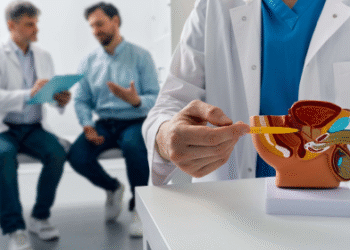Visiting an urgent care specialist can feel overwhelming. It’s important to know what to expect before you go. Urgent care centers are a bridge between regular doctor visits and emergency rooms. They offer quick help for non-life-threatening issues. In places like workers compensation San Antonio , visiting an urgent care specialist is often the first step. Many people find it useful to understand the services available and how these visits work. This knowledge can make your visit smoother and more reassuring. Let’s explore what happens during a typical urgent care visit.
What Services Do Urgent Care Centers Provide?
Urgent care centers handle many common health problems. These include minor injuries, infections, and allergic reactions. They also offer diagnostic services like X-rays and lab tests. Here’s a quick look at typical services:
- Treatment for minor injuries like sprains or small cuts
- Care for mild illnesses such as colds and flu
- Diagnostic tests like blood tests and X-rays
Each center may vary in terms of services offered. It’s good to check ahead if you have specific needs. You can find more information on services through resources like the CDC’s guidance on flu treatment.
How Does the Visit Work?
When you arrive, you’ll fill out some paperwork. This includes your medical history and insurance details. After that, a nurse will call you in for an assessment. This involves checking vital signs like temperature and blood pressure.
Next, you’ll see the urgent care specialist. They will assess your condition and may order tests if needed. Treatment follows based on your specific issue. If your condition requires more advanced care, they will refer you to a hospital or a specialist.
Comparison: Urgent Care vs. Emergency Room
It’s important to know when to choose urgent care over an emergency room. Here’s a simple comparison:
| Criteria | Urgent Care | Emergency Room |
| Type of Conditions | Non-life-threatening | Life-threatening |
| Wait Time | Shorter | Longer |
| Cost | Lower | Higher |
Urgent care is best for minor issues. The emergency room is for severe or life-threatening situations. The U.S. Department of Health & Human Services provides useful information on emergency treatment rights.
Preparing for Your Visit
Preparation can make your visit smoother. Bring your ID, insurance card, and a list of any medications you take. Arrive early to fill out the paperwork. It’s also helpful to have a basic understanding of your symptoms.
Many centers operate on a first-come, first-served basis. Some offer online check-in services. Consider using these to reduce wait times. Always check the center’s website or contact them for specific details.
After the Visit
After your visit, follow any care instructions given by the specialist. If medications were prescribed, fill them as soon as possible. Keep an eye on your symptoms. If they worsen, seek further care promptly.
Routine care after treatment is essential. It helps ensure your recovery is on track. Schedule any follow-up appointments if recommended.
Conclusion
Understanding what to expect from an urgent care visit can ease your anxiety. These centers offer valuable services for minor health issues. By preparing ahead, you can make the experience quicker and more efficient. Always know when to choose urgent care over the emergency room. This knowledge can save time, money, and stress in managing health needs.













